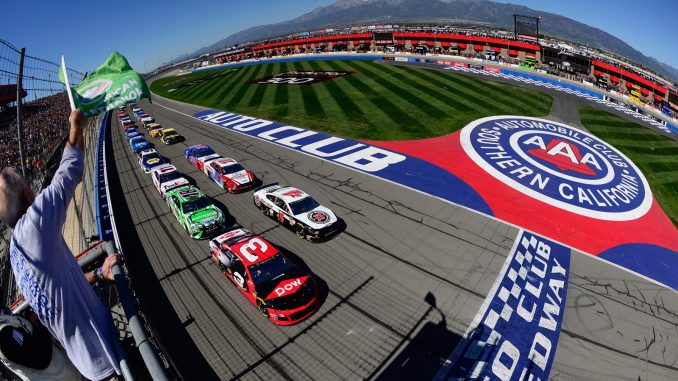
It seems that NASCAR has had enough. Wednesday the sanctioning body announced they will return to single-car qualifying at all oval tracks effective immediately.
NASCAR had instituted a knockout style of open qualifying in 2014. Under that system the track was open for 2-3 rounds of timed laps with the fastest cars advancing to the next round. The knockout system had come under fire this season after gamesmanship by teams led to cars sitting on pit road, and at Fontana saw the final round end with no cars making a timed lap.
NASCAR tried to adjust the rules to force cars to take laps, but with Wednesday’s announcement seem to have given up.
Now at oval tracks larger than 1.25 miles (Darlington Raceway and larger), the starting lineup will be determined with a single timed qualifying lap. At tracks 1.25 miles and shorter (World Wide Technology Raceway at Gateway and smaller), teams will start on the basis of the best of two timed single-car laps.
“It was (a) unified (decision) between broadcasters, teams and NASCAR,” Scott Miller, NASCAR senior VP of competition, said of returning to single-car runs.
“One of the other things to make a compelling program out of it is we’ve seen the use of the ghost car (on television). That’s going to be a big element in presenting a quality show. I think fans are going to be able to see which drivers drive in deep, which drivers roll the middle faster and get off the corners faster and really give the talent in the booth something to talk about.
“Another interesting aspect is every team has a good shot of getting covered during the qualifying session. We’re building in a few two-minute breaks to where TV can get some spots in and not break away from live action. That’s one of the goals in this, and I think with those designated spots and breaks we will be able to present almost a whole qualifying session live without going away.”
The qualifying order draw will be determined by the previous race’s starting lineup. For example, in the Monster Energy Series, the top 20 starters from the previous race will draw to take their qualifying lap in positions 21-40 (the second half of qualifying). The remainder of the cars will draw to qualify in positions 1-20.
Multi-car qualifying was used for road-course events in 2013, ahead of its full implementation at every track the following season. It was eliminated from superspeedway races at Daytona and Talladega in March 2015 as a safety measure after a series of crashes and questionable aero games made the system unfeasible at those high-speed circuits.
- Hamlin: ‘We just couldn’t get it going’ - April 14, 2024
- Finally: Chase Elliott wins at Texas in a double overtime finish - April 14, 2024
- Photos: NASCAR at Texas Motor Speedway Sunday April 14, 2024 - April 14, 2024